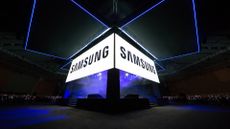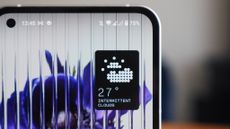The Nikon Z6 II and Nikon Z7 II launched in October 2020 and December 2020 respectively, much to the delight of Nikon mirrorless fans who’ve been waiting for the follow up to the original releases in 2018. And, this time around, they are bringing in quite a few much-needed updates that will certainly please many who found the original Z6 and Z7 lacking.
Some of the biggest updates these mirrorless bodies have received include expanded continuous shooting rate, a UHS-II SD card slot, a higher capacity battery, and the ability to operate using USB-C power. These updates alone make both bodies worth upgrading to whether you own a first-generation body or looking for a worthy alternative to Sony’s a7 and a7R series or the EOS R system cameras, Canon’s mirrorless contenders.
The question is, which camera must you choose? The Nikon Z6 II may be more affordable, but isn’t the kitted out Nikon Z7 II the best value in the long run? Not necessarily, and we’re here to show you why.
Nikon Z6 II vs Nikon Z7 II: Price
The price is one of the biggest deciding factors here. With the Nikon Z6 II retailing at £1,999/$1,999/AU$3,399 and the Nikon Z7 II setting consumers back £2,999/$2,999/AU$5,499, there’s a considerable difference between the two bodies – £1,000/$1,000/AU$2,100 to be exact.
So, while it might be too tempting to go for the kitted out Nikon Z7 II, it’s not going to be worth it for most shooters, especially considering that both cameras have a lot of features in common and that the Nikon Z6 II is an incredibly capable full-frame mirrorless in its own right.
Both cameras can be bundled with the NIKKOR Z 24-70mm f/4 S lens kit, with the Z6 II costing £2,549/$2,599/AU$3,999 and the Z7 II costing £3,549/$3,599/AU$5,699 with it.
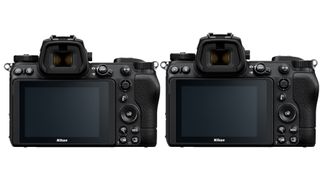
Nikon Z6 II vs Nikon Z7 II: Design and Features
Design-wise, it is hard to tell which camera is which without looking at the logos bearing their respective models at the bottom right of the front panel. Apart from it, there’s really nothing to distinguish both bodies.
They both weigh 615g, come in the same 134 x 100.5 x 69.5mm dimensions, and have the same buttons, dials, card slots, and ports in the same locations. Even the 3.2-inch 2.1 million dot articulating touchscreen and 3.6 million dot QVGA electronic viewfinder are the same. As are their storage media, Wi-Fi and Bluetooth capabilities, and weather sealing.
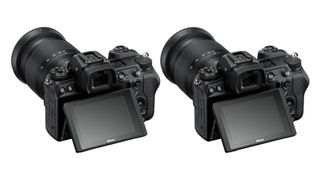
Essentially, these are two cameras stuffed in the same chassis and fitted with the same features.
Among those new key features that the Nikon Z6 II and Nikon Z7 II share are a UHS-II SD card slot (in addition to the existing XQD slot), the ability to operate and charge using USB-C power, and compatibility with the MB-N11 proper vertical grip that come with a shutter button and exposure controls. These upgrades will certainly give timelapse and astrophotographers, among others, a cause to revel.
Nikon Z6 II vs Nikon Z7 II: Specs and Performance
It’s in their innards where the Nikon Z6 II massively differs from the Nikon Z7 II. They have a few features in common. Both are capable of recording 4K at up to 60p and 1080p at up to 120p, shooting up to 900-second or 15-minute exposures, and taking images using the intervalometer and timelapse functions.
In addition, both have a 5-axis in-body image stabilization, a TTL metering system, and a hybrid AF system with on-sensor phase-detection and contrast-detection. That AF system has also been given a boost: the human or animal eye/face detection is now on hand in the Wide-area AF mode, which lets you select the area of the frame where you want the focus, essentially telling the camera where precisely to detect your subject’s eyes or face.
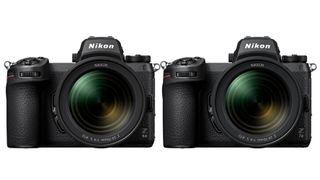
More importantly, the two bodies are now fitted with dual Expeed 6 processors, which not only give them both more processing power but also expands their maximum continuous shooting rate. And finally, they both use a higher capacity battery called EN-EL15c while still offering support for EN-EL15b batteries – in case you still have an older one at your disposal.
That’s pretty much where the main similarities in specs end. With the Nikon Z7 II being the higher-end model, meant for pros who need a whole lot more pixels, it is fitted with a 45.7MP sensor that gives you up to 8256 x 5504 in image resolution and a wide native ISO range of 64 to 25,600. The Z7 II also comes with a higher-end AF system made of 493 focus points, and has a battery life rated at 420 shots when using the LCD, 360 when using the viewfinder.
The Nikon Z6 II, on the other hand, only has a 24MP sensor, though it still yields incredibly sharp and detailed images of up to 6048 x 4024 in resolution and allows a native ISO range of ISO 100 to 51,200. Its AF system is no slouch either, with decent 273 AF points. We wish the battery life could be better, but it isn’t far behind the Z7 II with 410 shots via the LCD and 340 through the viewfinder.
It also has a few advantages over the Z7 II. It has a faster burst rate of 14fps over the Z7 II’s 10fps, better AF detection range of -4.5 EV to +19 EV that makes its autofocus better performing in low light conditions, and a large camera buffer of 124 RAW images (compared to the Z7 II’s 77 images).
Nikon Z6 II vs Nikon Z7 II: Lenses
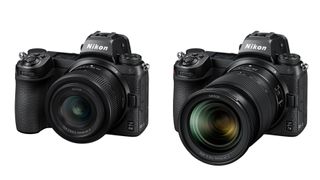
Both the Nikon Z6 II and the Nikon Z7 II have a Z-moun and are made for the Nikkor Z lenses, Nikon’s newest fleet of lenses, of which there are 16 – ranging from primes to zooms, wide angles to telephotos – at the time of writing.
However, thanks to Nikon’s Mount Adapter FTZ, which must be purchased separately, both cameras are also compatible with the manufacturer’s F-mount lenses, of which there are a lot more. This increases lens options for both cameras exponentially, and makes these mirrorless bodies a more compelling proposition for Nikon DSLR users who are considering making the switch a more portable body.
Nikon Z6 II vs Nikon Z7 II: Our Verdict
Taking into account both cameras’ features, design, and price points, does this mean that the Nikon Z6 II is a much better value than the Nikon Z7 II? For most shooters, absolutely.
The Nikon Z7 II may have the higher resolution sensor, the more capable autofocus system, and a longer battery life. However, considering it’s also £1,000/$1,000/AU$2,100 more – a hefty price to pay – it isn’t really the best value option for everyone.
To many photographers, the Z6 II’s 24MP sensor is more than enough to get the high-resolution images they need or want. And, if they’re experienced enough to justify purchasing a non entry-level, they should be experienced enough not to rely too much on autofocusing anyway – unless they shoot a lot of fast moving subjects. As for the battery life, getting the MB-N11 battery grip or a spare battery for the Z6 II is a lot more economical. That’s not to mention the host of advantages this model brings to the table.
At the same time, a case can also be made for the Z7 II. Photographers who actually need those super high resolution images for work – if they need to print large prints, for example – or will get a lot of use out of its AF system – if they do a lot of action, sports, and wildlife photography – will truly benefit from Nikon’s pricier mirrorless model.
As for the rest, the Nikon Z6 II is the better choice.
Liked this?


